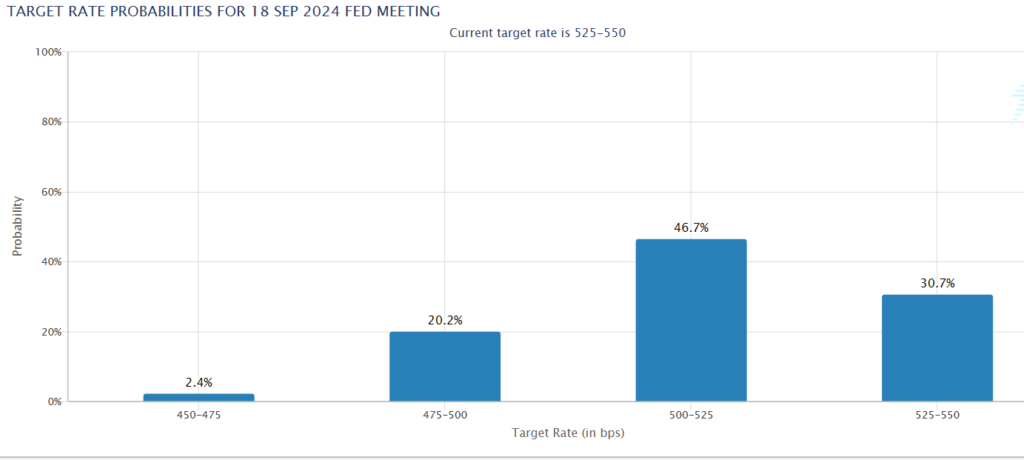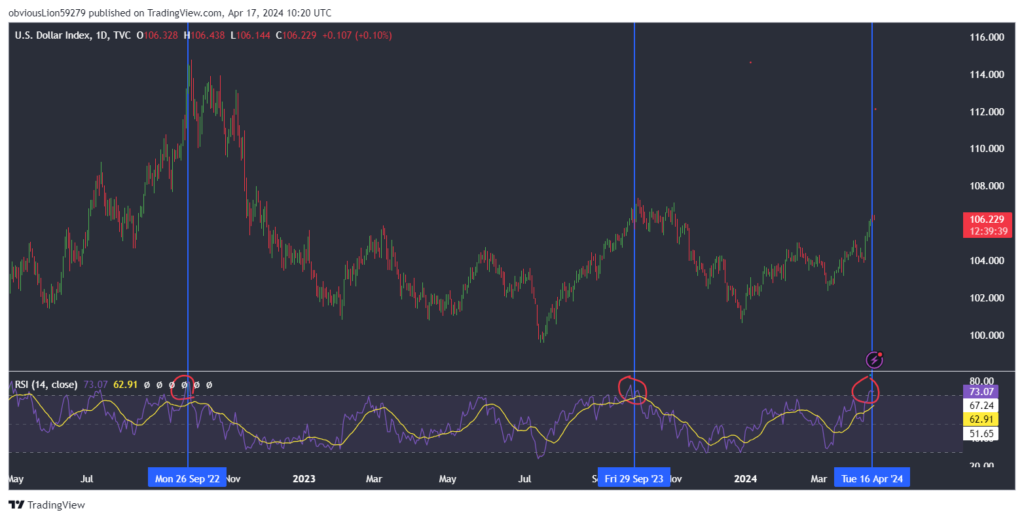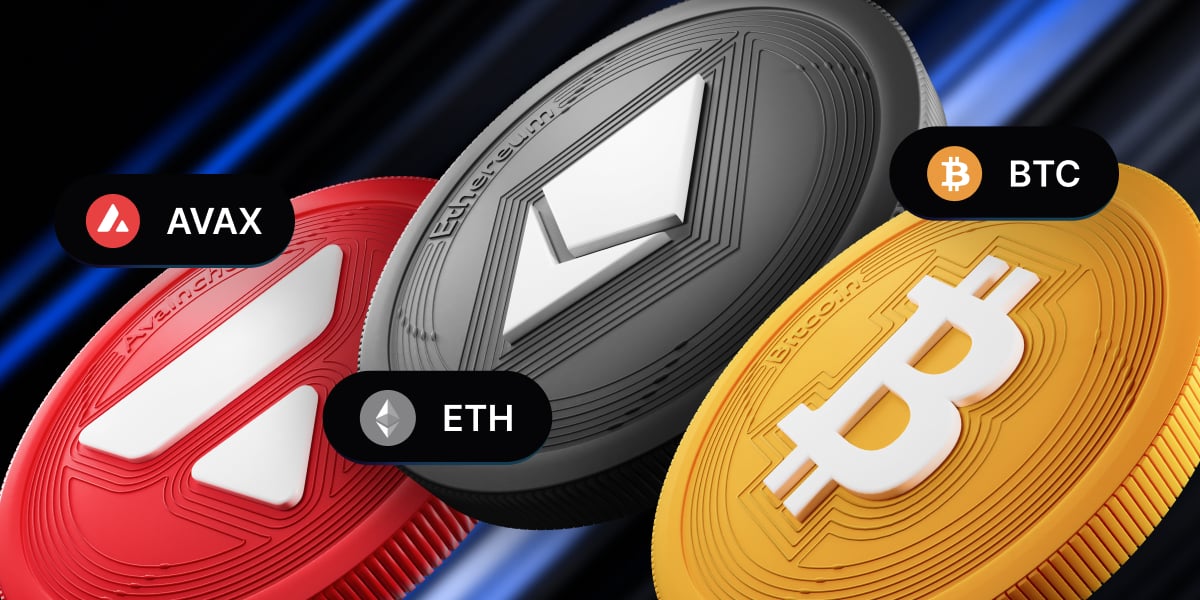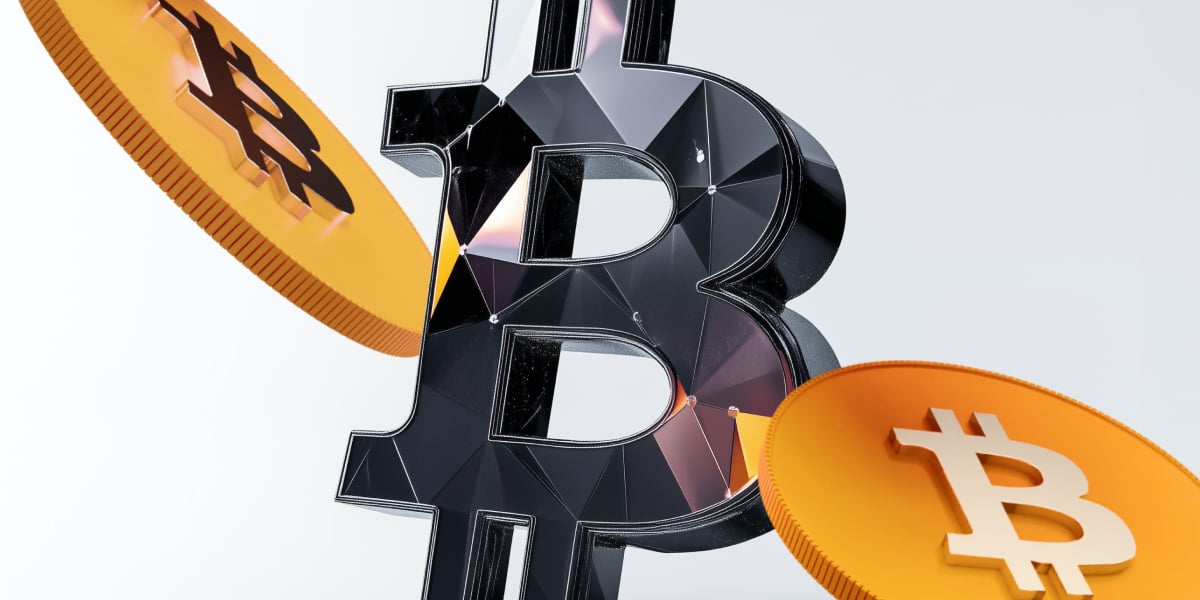Bitcoin recovered from 61,300 and advanced despite the USD trading at a fresh 5-month high.
The US Dollar index, which measures the USD against a base of major peers, has pushed above 106.00, booking a five-day winning run, its longest winning streak in over a year.
- USD rose to its highest level since October
- Fed Chair Powell dampened rate cut expectations
What’s driving the USD?
The USD has risen to its highest level since November as the market reins in interest rate-cut expectations. Hotter-than-expected inflation data, which rose for a third straight month in March, combined with robust US economic growth, means there is no urgency for the Fed to start cutting rates.
Yesterday, Fed Chair Jerome Powell acknowledged this by adopting a more hawkish tone in his speech. He warned that the lack of progress in cooling inflation could delay rate cuts this year.
According to the CME Fedwatch tool, the market is pricing in the first Fed rate cut in September, which has been pushed back from expectations of the first rate cut in July, less than a month ago, and June, just a few months ago.

Higher interest rates typically encourage foreign investors to capitalise on greater returns on bonds and deposits, increasing demand for the USD.
The re-pricing of Fed rate cut bets has boosted the USD, which has risen over 1.5% so far in April and is on track to book its fourth straight monthly rise.
Looking at the DXY chart, the Relative Strength Indicator shows the price is in overbought territory. This hasn’t happened on many occasions over the past year, but when it happened previously, it was followed by a move lower in the USD. Past performance doesn’t indicate future direction, but it is a relationship that should be considered.

While USD has pushed higher, BTC/USD is on track to fall 11% in April after a steep decline last week. This week, the price is consolidating ahead of the Bitcoin halving event.
Bitcoin halving
Previous halving events have preceded considerable rallies in the Bitcoin price, and the Bitcoin community is confident that history will repeat itself, particularly given the Bitcoin ETF approval, which has opened the door for institutional investors.
Still, investment bank Goldman Sachs has cautioned that today’s high inflation and high interest rate climate means that the macroeconomic backdrop is different from that in previous halving cycles and less supportive of risk-taking, which could affect Bitcoin’s performance after the halving.
That said, it is worth noting that despite the USD rising 4.5% so far this year and the Federal Reserve keeping interest rates at 5%, a 22-year high, Bitcoin has still gained 50% in 2024 and reached an ATH last month.
The impressive rally has been due to Bitcoin ETF approval, which has changed the Bitcoin landscape. This could have also brought forward the post-halving rally, meaning we see a buy-the-rumor, sell-the-fact reaction to Bitcoin halving in the short term. Over the medium term, the outlook could be more driven by ETF demand.
Sources




